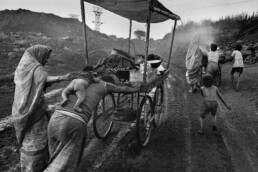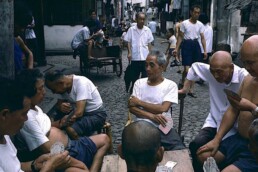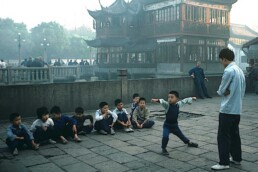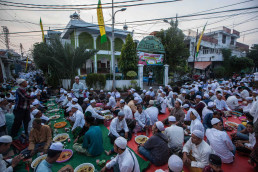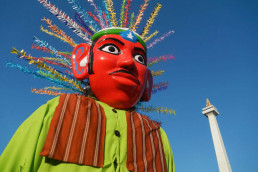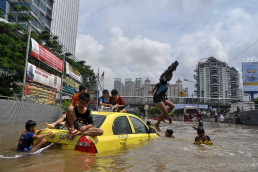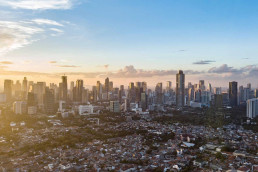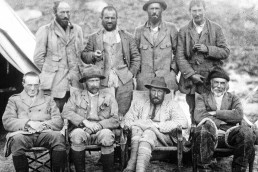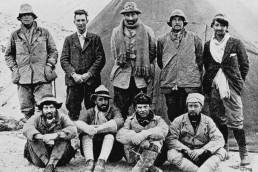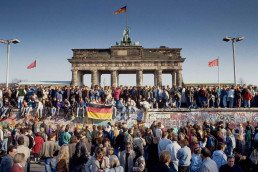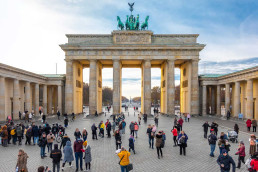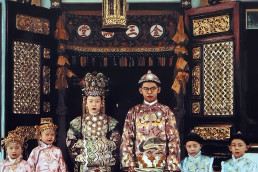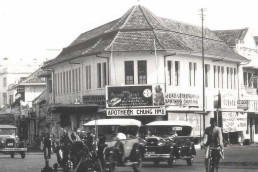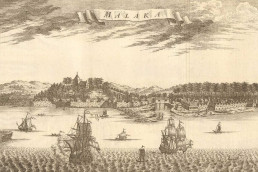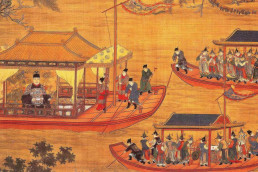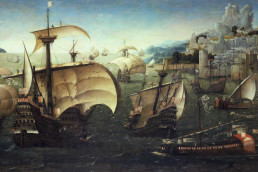The Art of Photo Story Crafting Narratives That Resonate Deeply
In today’s visually saturated world, single images often fail to capture the depth and complexity of a moment or subject. While a well-composed photo can indeed be striking, it frequently lacks the narrative power needed to engage viewers fully. This is where photo stories come into play. By weaving a sequence of images into a cohesive narrative, photographers can transform their work from mere snapshots to rich, immersive experiences that resonate with their audience on a deeper level.
Photo stories offer a dynamic alternative to single images by providing context, depth, and continuity. They allow photographers to explore their subjects more comprehensively, capturing not just a moment in time, but the nuances and complexities of a situation or theme. A well-crafted photo story can convey emotions, chronicle events, and highlight contrasts in a way that a single image simply cannot.
Producing a compelling photo story requires careful planning, a clear narrative structure, and a deep understanding of the subject. Here are some essential steps to guide photographers in creating photo stories that captivate and inform.
Concept and Theme Development
Start by defining a clear concept or theme for your photo story. This could be anything from documenting a local festival, capturing the daily life in a remote village, to exploring environmental changes in a specific area. The theme should be specific enough to give direction but broad enough to allow for a variety of shots.
Research and Planning
Thorough research is crucial. Understand your subject, its history, and its context. This background knowledge will help you anticipate key moments and identify the most compelling aspects of your story. Plan your shots, considering locations, times of day, and any necessary permissions or logistical arrangements.
Story Line
A successful photo story has a beginning, middle, and end. Start by introducing your subject and setting the scene. Develop the story by highlighting key moments or changes, and conclude with a resolution or closing image that leaves a lasting impression. This narrative structure helps maintain the viewer’s interest and provides a satisfying journey through your images.
Diverse Perspectives
Capture a variety of shots to add depth and interest to your story. Use wide-angle shots to establish the scene, medium shots to show context, and close-ups to highlight details. Different perspectives can also convey different emotions and dynamics, enriching the overall narrative.
Consistency in Style
Maintain a consistent photographic style throughout your story. This includes aspects like color palette, lighting, and composition. Consistency helps create a cohesive and professional-looking photo story, enhancing its impact.
One of the most iconic photo stories is W. Eugene Smith’s “Country Doctor,” published in Life magazine in 1948. Smith spent 23 days with Dr. Ernest Ceriani, capturing the life of a rural physician in Kremmling, Colorado. This photo essay is celebrated for its intimate and empathetic portrayal of the doctor’s daily challenges and triumphs. Smith’s ability to capture a wide range of emotions, from exhaustion to compassion, and the detailed context of the doctor’s interactions with his patients, makes “Country Doctor” a powerful narrative.
Another notable example is Sebastião Salgado’s “Workers,” which documents laborers around the world. Salgado’s images go beyond mere documentation; they tell the story of human endurance and resilience in the face of arduous work conditions. Each photograph is a chapter in the broader narrative of global labor, providing a profound commentary on the human condition.
In conclusion, transforming a collection of images into a compelling photo story can significantly enhance the impact of your work. By creating a narrative arc, capturing diverse perspectives, and maintaining a consistent style, photographers can move beyond the limitations of single images and create rich, engaging visual stories. Photo stories have the power to inform, inspire, and evoke deep emotional responses, making them a potent tool for any photographer. In the end, it is the story behind the images that breathes life into a photograph, transforming it from a fleeting moment into a lasting impression.
Hiroji Kubota: The Faces and Places of China’s Transformation
Hiroji Kubota, a renowned Japanese photographer, has spent decades documenting the vibrant and tumultuous landscapes of Asia. His works are celebrated for their profound depth and striking visual narrative, capturing not just the images, but the essence of the places he visits. Kubota’s journey as a photographer is marked by his unique ability to blend into his surroundings, allowing him to capture candid and powerful moments. Among his many accomplishments, his photographic chronicles of China stand out as some of the most iconic and impactful.
Hiroji Kubota’s foray into China began in the 1970s, a time when the country was undergoing significant political and social transformations. China, with its vast landscapes, diverse cultures, and profound history, offered a rich canvas for Kubota’s lens. His photographs from this period provide an intimate look into the daily lives of the Chinese people, juxtaposed against the backdrop of a nation in flux.
Kubota’s work in China is characterized by its diversity. He captured everything from the serene beauty of rural landscapes to the bustling energy of urban centers. His ability to find the extraordinary in the ordinary is evident in his photographs, which often focus on the subtleties of human interaction and the intricate details of everyday life.
Hiroji Kubota’s contributions to photography have been recognized globally. He has been a member of the prestigious Magnum Photos since 1981, a testament to his skill and impact as a photographer. His works have been exhibited in major galleries and museums around the world, including the International Center of Photography in New York and the Tokyo Metropolitan Museum of Photography.
Kubota has also published several books, with “China” being one of the most notable. This comprehensive collection of his work in China is a visual narrative that spans over three decades, providing an in-depth look into the transformation of the nation. His ability to capture the essence of his subjects has earned him numerous accolades and awards, cementing his place as one of the leading photographers of his time.
Hiroji Kubota’s legacy is one of profound storytelling through the lens of his camera. His work in China stands as a testament to his ability to capture the heart and soul of a nation. Through his iconic photographs, Kubota has provided the world with a window into the lives, struggles, and triumphs of the Chinese people. His achievements in photography continue to inspire and influence new generations of photographers, ensuring that his legacy endures.
Kubota’s images are more than just photographs; they are powerful narratives that connect us to the human experience across different cultures and epochs. As we reflect on his work, we are reminded of the enduring power of photography to transcend borders and tell stories that resonate with our shared humanity.
Jakarta: Embracing Its Past, Celebrating Its Future
On this momentous occasion, we celebrate the birthday of Jakarta, a city that has long stood as the vibrant heart of Indonesia. Known for its bustling streets, towering skyscrapers, and rich of cultures, Jakarta has been a melting pot of traditions, languages, and lifestyles. As we honor Jakarta’s legacy, we also look to its future, especially with the impending relocation of Indonesia’s capital to Borneo. This transition marks a significant chapter in Jakarta’s story, filled with both challenges and opportunities.
Jakarta’s history as a cultural melting pot dates back centuries, to when it was a thriving port city known as Sunda Kelapa. In the 16th century, the Portuguese, followed by the Dutch, recognized its strategic importance, leading to centuries of colonial rule under the name Batavia. This period saw an influx of diverse populations, including Chinese traders, Arab merchants, and Indian laborers, each leaving an indelible mark on the city’s cultural fabric.
After gaining independence in 1945, Jakarta was rechristened and transformed into the capital of Indonesia. The city’s evolution continued as it welcomed migrants from all corners of the archipelago, each bringing their unique customs, cuisines, and traditions. Today, Jakarta is a microcosm of Indonesia, where Javanese, Sundanese, Batak, Minangkabau, and countless other ethnic groups coexist.
Jakarta’s diversity is reflected in its neighbourhoods, each with its distinct character. In Glodok, Jakarta’s Chinatown, the air is filled with the aroma of traditional Chinese dishes, and temples like Vihara Dharma Bhakti stand as testaments to the community’s deep roots. Similarly, the area of Kampung Arab in Tanah Abang showcases Arab culture with its Middle Eastern eateries, mosques, and vibrant markets.
The Betawi people, native to Jakarta, also play a significant role in the city’s cultural landscape. Their traditional music, dances like the colourful Ondel-Ondel, and culinary delights such as Kerak Telor and Soto Betawi, provide a unique local flavour that is quintessentially Jakartan.
Festivals in Jakarta further illustrate this rich cultural mosaic. The Chinese New Year, Idul Fitri, Christmas, and Hindu festivals are celebrated with equal fervour, each adding to the city’s festive calendar. Events like the Jakarta Fair and cultural parades highlight the city’s commitment to honouring its diverse heritage.
However, Jakarta’s rapid growth has not come without challenges. The city faces significant issues, including traffic congestion, flooding, and pollution. Its infrastructure is often strained by the demands of its more than 10 million residents. In response to these challenges, the Indonesian government has embarked on ambitious projects to modernise the city. The Mass Rapid Transit (MRT) system, improved flood control measures, and green spaces like the revitalised Kalijodo Park are steps towards creating a more sustainable urban environment.
One of the most transformative changes on the horizon for Jakarta is the relocation of Indonesia’s capital to Nusantara in East Kalimantan, Borneo. This decision, announced by President Joko Widodo, aims to reduce the burden on Jakarta and promote more balanced economic development across the country. The new capital is envisioned as a smart, green city, designed to address issues of sustainability and resilience to climate change.
While the move signifies a new chapter for Indonesia, it also presents an opportunity for Jakarta to redefine itself. Freed from the administrative pressures of being the capital, Jakarta can focus on becoming a global city, enhancing its role as the economic and cultural hub of Southeast Asia. Investments in technology, infrastructure, and tourism can help Jakarta leverage its rich cultural heritage while embracing modernity.
As we celebrate Jakarta’s birthday, it is essential to acknowledge both its historical significance and its dynamic future. Jakarta’s story is one of resilience and transformation, a city that has continuously evolved while remaining true to its multicultural roots. The impending relocation of the capital does not diminish Jakarta’s importance; rather, it offers a chance for reinvention and growth.
In this period of transition, the spirit of Jakarta remains vibrant. Its bustling markets, diverse culinary scene, and the harmonious coexistence of different cultures are a testament to its enduring legacy. As the city looks forward to a new era, it carries with it the lessons of the past and the promise of a bright, inclusive future.
Happy Birthday, Jakarta. Here’s to celebrating your past, embracing your present, and looking forward to your future.
Craft Immersive Visual Through The Lens of Your Smartphone
In an era where our smartphones are almost always within arm’s reach, they have become our go-to tools for capturing life’s moments. Modern smartphones boast impressive camera technology, allowing us to take high-quality photos with ease. However, the key to truly stunning smartphone photography lies in understanding and leveraging the capabilities of these devices. Here are some tips and tricks to help you optimize your smartphone for capturing breathtaking photos, maintaining a formal yet engaging approach, reminiscent of National Geographic’s style.
Understanding Your Smartphone Camera
Before diving into specific techniques, it’s essential to familiarise yourself with your smartphone camera’s features and settings. Most smartphones offer a variety of modes, such as portrait, night, and panorama, each designed for different shooting conditions. Spend time exploring these modes and reading the user manual or online guides specific to your device. Knowing what your camera can do is the first step toward mastering smartphone photography.
Leverage Natural Light
Lighting is crucial in photography, and natural light is often the best source. When taking photos outdoors, try to shoot during the golden hours – the hour after sunrise and the hour before sunset. During these times, the light is soft and warm, creating beautiful, natural tones in your photos. If you’re shooting indoors, position your subject near a window to utilize the soft, diffused light.
Use Gridlines for Better Composition
One of the fundamental principles of photography is the rule of thirds. By dividing your frame into nine equal parts using two horizontal and two vertical lines, you can position your subject along these lines or at their intersections. This technique helps create balanced and visually appealing compositions. Most smartphones have a gridlines option in the camera settings, enabling you to apply this rule effortlessly.
Steady Your Shot
Blurry photos are often the result of camera shake. To minimize this, hold your smartphone with both hands and tuck your elbows close to your body for added stability. Alternatively, use a tripod or a stable surface to keep your phone steady, especially in low-light conditions where longer exposure times can amplify any movement.
Focus and Exposure Control
Smartphones typically offer touch-to-focus functionality, allowing you to tap on the screen to focus on your subject. This feature is particularly useful for creating sharp images and controlling depth of field. Additionally, most smartphones allow you to adjust exposure manually by sliding your finger up or down on the screen. Experiment with these controls to achieve the perfect balance of light and detail in your photos.
Utilize HDR Mode
High Dynamic Range (HDR) mode can be a game-changer for smartphone photography. This feature captures multiple exposures of the same scene and combines them to create a single image with enhanced details in both the shadows and highlights. HDR mode is particularly effective in high-contrast scenes, such as landscapes with bright skies and dark foregrounds. However, use it judiciously, as overuse can result in unnatural-looking images.
Experiment with Angles and Perspectives
Great photography often involves seeing the world from a different perspective. Don’t be afraid to experiment with various angles and viewpoints. Get down low to shoot from a worm’s-eye view or find an elevated position for a bird’s-eye perspective. Changing your angle can add interest and uniqueness to your photos, setting them apart from the usual eye-level shots.
Edit Your Photos
Post-processing is an integral part of modern photography. While smartphones offer built-in editing tools, consider using dedicated apps like Adobe Lightroom, Snapseed, or VSCO for more advanced editing options. These apps allow you to adjust exposure, contrast, color balance, and more, helping you refine your photos and bring your creative vision to life. Remember, the goal of editing is to enhance your images, not to over-process them. Aim for subtle adjustments that improve the overall quality while maintaining a natural look.
Clean Your Lens
It may seem obvious, but a clean lens is essential for sharp, clear photos. Our smartphones endure a lot of handling, which means the lens can easily become smudged or dirty. Make it a habit to wipe your lens with a soft, lint-free cloth before taking photos. This simple step can significantly improve the clarity and quality of your images.
Practice and Patience
Like any skill, mastering smartphone photography requires practice and patience. Take the time to experiment with different settings, techniques, and subjects. Analyze your photos critically and learn from your mistakes. Over time, you’ll develop a keen eye for composition, lighting, and detail, allowing you to capture stunning images consistently.
Conclusion
Smartphone photography offers endless possibilities for capturing the beauty of the world around us. By understanding your device, leveraging natural light, and applying fundamental photography principles, you can elevate your photos from ordinary to extraordinary. As you continue to explore and experiment, remember that the best camera is the one you have with you. Embrace the convenience and power of your smartphone, and let your creativity shine through every shot.
Mallory’s Unfinished Journey The Enigma of Everest’s Pioneer
In the annals of mountaineering history, few names resonate with as much intrigue and reverence as that of George Mallory. Born on June 18, 1886, in Mobberley, Cheshire, England, Mallory’s early life was marked by a profound connection to the natural world and a burgeoning passion for climbing. His father, a clergyman, instilled in him a sense of discipline and curiosity, while his mother encouraged his adventurous spirit. This confluence of influences set the stage for a life that would be defined by daring ascents and the relentless pursuit of the world’s highest peak, Mount Everest.
Mallory’s introduction to climbing came during his education at Winchester College, where he was captivated by the nearby hills and crags. His talent was evident early on, and he soon became an adept climber, honing his skills in the challenging terrains of the Alps. His time at the University of Cambridge further solidified his reputation as a formidable mountaineer. Mallory’s prowess on the peaks of Europe earned him a place in the Alpine Club, setting the stage for his involvement in the most ambitious climbing expeditions of his time.
In 1921, Mallory joined the first British reconnaissance expedition to Mount Everest, an undertaking that aimed to map and explore potential routes to the summit. The expedition, though not intended to reach the top, was crucial in providing invaluable insights into the geography of the mountain. Mallory and his team faced harsh conditions, navigating through treacherous ice fields and scaling daunting ridges. Despite the challenges, Mallory’s enthusiasm and leadership were instrumental in charting a feasible path to Everest’s summit. His detailed observations and photographs from this expedition laid the groundwork for future attempts.
Encouraged by the successes of the 1921 reconnaissance, Mallory returned to Everest in 1922 with the ambition of reaching the summit. This expedition marked the first time climbers attempted to scale Everest with the explicit goal of conquering its peak. Mallory and his team made significant progress, reaching an altitude of approximately 26,800 feet, a record at the time. However, their efforts were thwarted by extreme weather conditions and the limitations of their equipment. The expedition also experienced tragedy when an avalanche claimed the lives of seven porters, a sobering reminder of the mountain’s formidable power. Despite not reaching the summit, the 1922 expedition demonstrated the feasibility of a future ascent and cemented Mallory’s status as a leading figure in high-altitude mountaineering.
The most fateful of Mallory’s expeditions came in 1924. With renewed determination and accompanied by a young and promising climber, Andrew “Sandy” Irvine, Mallory set out once again to conquer Everest. On June 8, 1924, Mallory and Irvine made their final push for the summit. They were last seen by fellow climber Noel Odell, who reported spotting them high on the mountain, moving strongly towards the top. After that, they vanished into the mists of Everest, their fate shrouded in mystery for decades.
The discovery of Mallory’s body in 1999 by an expedition led by Eric Simonson brought some closure yet left many questions unanswered. Mallory was found at an altitude of approximately 26,760 feet, his body remarkably preserved by the icy conditions. The position of his body suggested a fall, but whether it occurred during the ascent or descent remains a topic of speculation. The absence of Irvine’s body and the camera they carried means we may never know for certain if they reached the summit before their tragic end.
George Mallory’s legacy transcends the realm of mountaineering. His life and untimely death epitomize the spirit of exploration and the human drive to push beyond known limits. Mallory’s famous response to the question of why he wanted to climb Everest, “Because it’s there,” encapsulates the essence of adventure and the intrinsic desire to explore the unknown. This phrase has since become a mantra for explorers and adventurers worldwide.
Mallory’s expeditions, particularly the mystery surrounding his final climb, have inspired countless books, documentaries, and films, ensuring that his story continues to captivate and inspire new generations. His contributions to mountaineering techniques and the understanding of high-altitude climbing have left an indelible mark on the field.
George Mallory’s pursuit of Everest was not merely a quest for personal glory but a testament to the enduring human spirit and its insatiable curiosity. His life, filled with bold adventures and tragic moments, serves as a poignant reminder of the heights to which we can aspire and the depths of mystery that still call us to explore. As we reflect on his contributions and the enigmatic end of his journey, Mallory remains a symbol of courage, determination, and the unyielding quest for discovery.
Hermandari's Journey Aging Gracefully With Cameras
Hermandari Kartowisastro, an inspirational woman in Indonesian photography, defies ageing stereotypes by following her vocation with unwavering zeal. At an age when many people opt to slow down, Hermandari began on an incredible trip, capturing the world’s beauty through her lens. Her tale is one of resilience, ingenuity, and an insatiable desire to explore.
What inspires you to travel and capture the world through your lens, especially at a time when many people slow down with age?
“I’ve enjoyed travelling since I was young. After my children finished school, I had the time to pursue my passion for travelling to exotic countries. Initially, I felt that something was lacking from my visits; images of these places hardly reflected their beauty. This realisation set off my career into photography. The advent of the digital era made it much easier to observe rapid results, which fueled my desire even more. At the age of 68, I participated in a two-week photography course. In 2023, I improved my talents by learning drone photography, which has added a new dimension to my work and allowed me to shoot magnificent aerial views. Photography has offered me great joy during my senior years.”
Are there any photographers or artists who have influenced your style or approach to photography?
“Henky Kuntjoro, I met him on a liveaboard diving trip in 2008 and was taken by his underwater and on-land photography, particularly his black-and-white compositions. Michael Kenna, a world-renowned B&W landscape photographer, has significantly influenced me with his lighting and austere compositions. These two photographers had a significant impact on my approach. While I experiment with numerous genres, I am most drawn to landscapes, simplicity, and minimalism. Portrait photography under Sandy Wijaya’s tutelage, as well as my natural affinity for art, particularly abstract and minimalist painting, impacted my style. I adore painters like Jeihan Sukmantoro, A.D. Pirous, and Umi Dahlan, whose works grace my home.”
Were there any challenges you faced in learning a new creative skill at a later stage in life, and how did you overcome them?
“Initially, learning photography was not difficult; it simply took practice and memorising procedures. However, in recent years, memory lapses have become a challenge. To prevent this, I take notes, edit my images on a regular basis, and play mentally demanding games like Sudoku and word puzzles.”
Do you have any exciting photography projects or adventures planned for the future? Why are they so exciting?
“I have various travel and photography ambitions that I aim to carry out. It’s always exciting to see new locations, learn about different cultures, and meet new people. This year, I’m particularly looking forward to going to Namibia for its spectacular vistas and deserts, chasing the aurora borealis in North Norway, exploring Kyrgyzstan, and visiting Oman.”
How do you curate the themes and locations for your photography tours to ensure a unique and impactful experience?
“Researching and reading about potential destinations is essential. With the abundance of information available nowadays, it is simple to identify intriguing sites. I look for appealing images of these areas, calculate the best times to travel, and pick what equipment to carry.
Was there a particular destination or moment during your Mahacaraka trip that stood out for you as a photographer?
“Yes, Lo Manthang, or Mustang, in northern Nepal, was very remarkable. The journey was thrilling, with a sense of danger. We had to prepare for fewer facilities while being healthy at high altitudes. After a nerve-racking flight from Pokhara to Jomsom, which came near to a crash two days later, we chose to travel overland. The three-day Tiji Festival was a highlight, providing rich experiences and captivating moments.”
Looking back at your incredible career, which photography project has been the most rewarding for you and why?
“My participation in the 16th ArtJog in 2023 was extremely fulfilling. I was happy to be chosen, and even more thrilled when one of my images from a Mahacaraka trip to Mexico in 2022 sold. La Catrina’s portrait, which was shown and sold, retains a particular place in my heart. ArtJog is a famous exhibition, and it was an honour to be picked as one of the few photographers, particularly as a woman.”
What advice would you give to aspiring travel photographers who want to join photography tours, especially at a later stage in life?
“First and foremost, maintain good health and a positive spirit. Exercise regularly and live a healthy lifestyle. Positivity is key, especially when travelling to exotic or underprivileged countries. Embrace the local culture and find joy in the unique experiences it offers, even if it differs from your own beliefs.”
Hermandari Kartowisastro continues to explore the world and capture its beauty, reminding us that age is just a number. Her story exemplifies the power of passion, resilience, and the delight of continuous learning. For anyone feeling the weight of age or uncertainty, Hermandari’s narrative shines a light on the limitless possibilities that await those who dare to pursue their ambitions. Let her adventure inspire you to pursue your passions, explore the unknown, and live life to the fullest, no matter what stage of life you are in.
Deutschland's Journey From Division To Unity
As the world awaits Euro 2024, Germany is ready to host this major tournament, welcoming football lovers from all over the world to experience its rich history, lively culture, and intense love for the beautiful game. This tournament is more than simply a sporting event; it is an opportunity to learn about the unique story of a nation that has emerged from division to togetherness, and how Berlin, its city, represents this extraordinary journey.
Following World War II, Germany was divided into two different entities: West Germany (the Federal Republic of Germany) and East Germany (the German Democratic Republic). This separation was caused by political tensions between the Allied countries, primarily the United States and the Soviet Union, which led to the outbreak of the Cold War.
Berlin, the epicentre of this schism, was divided between East and West. The vast contrasts in political ideology and economic conditions between the two sides created considerable conflict. By 1961, the flow of refugees from East to West Germany had turned into a flood, with individuals seeking the freedom and wealth that the West offered. To stem the tide, the East German authorities, with Soviet support, built the Berlin Wall on August 13, 1961. This enormous barrier of concrete and barbed wire physically and ideologically divided not only a city, but also a country and the entire world.
The Berlin Wall became the Cold War’s most powerful emblem, signifying the greater conflict between communism and democracy. Families were torn apart, and the wall served as a constant reminder of the East German regime’s oppressive and controlling policies.
The fall of the Berlin Wall on November 9, 1989, was one of the most significant events of the twentieth century. It was triggered by a number of political upheavals and civil unrest. Throughout the 1980s, East Germany struggled with economic challenges and increased pressure from its populace for greater freedom. The Soviet Union’s liberalisation initiatives under Mikhail Gorbachev undercut the East German government’s commitment.
Mass protests in East German cities, along with the massive outflow of East Germans to neighbouring nations, created an unsustainable situation. On that fateful night, a misinterpretation in a government announcement resulted in border guards unlocking the gates, and hundreds of East Berliners flooded into the West, celebrating their newfound freedom. The fall of the Berlin Wall signalled the end of the East German state and prepared the path for German reunification, which was officially completed on October 3, 1990.
Following reunification, one of the most important considerations facing the new Germany was the choice of its capital. Berlin, with its historical significance and symbolic weight, was an obvious option. But why Berlin, especially considering its position in the former East Germany?
Berlin’s past as Germany’s pre-war capital influenced this decision significantly. Choosing Berlin as the capital was a clear declaration of togetherness and a wish to mend historical divisions. It represented the reunification of the German people after decades of isolation.
Berlin has traditionally been a cultural and intellectual centre. Its museums, universities, and cultural institutions have long attracted researchers, artists, and intellectuals from all over the world. Following reunification, Berlin’s cultural sector has thrived, with the city becoming a hotbed of creativity and innovation, attracting a new generation of artists and entrepreneurs.
Reestablishing Berlin as Germany’s capital also meant restoring it as the country’s political centre. The government’s transfer from Bonn to Berlin in 1999 reinforced this transformation. Today, Berlin is not just the political capital of Germany, but also an economic powerhouse, making substantial contributions to the German and European economies.
As we prepare for Euro 2024, Berlin is back in the spotlight, this time as a lively, united city eager to host a global football festival. The Olympiastadion, a historic stadium dating back to the 1936 Olympics, will serve as a focal point for the event, symbolising the spirit of community and celebration.
Visitors visiting Berlin during Euro 2024 will have the opportunity to discover a city that has emerged from the ashes of division to become a symbol of resilience and unity. They can stroll through the East Side Gallery, where fragments of the Berlin Wall have been converted into a canvas of freedom, and see renowned sights like the Brandenburg Gate and the Reichstag.
Euro 2024 is more than just a sporting event; it is an opportunity to celebrate Germany’s path from division to togetherness, with Berlin at the centre. As football fans from all over the world assemble in this historic city, they will become part of a broader story of healing and hope. Germany’s rich history, dynamic culture, and enduring spirit make it an ideal location for this enormous event. Welcome to Germany, and welcome to Euro 2024!
Spice Up Your Bahasa with Some Secret Hokkien Flavors
Indonesia, a vibrant archipelago comprising thousands of islands, is both culturally and linguistically diverse. This complicated blend is represented by the national language, Bahasa Indonesia, which incorporates elements of Arabic, Sanskrit, and European languages. However, a lesser-known but significant contributor lies beneath the surface: Hokkien, a Chinese dialect.
Hokkien is a Southern Min dialect that originated in Fujian province, China. Historically, Chinese traders, many of whom spoke Hokkien, travelled extensively throughout Southeast Asia, bringing not only unusual goods but also some of their original language. These encounters persisted for decades, leaving an enduring imprint on the languages and civilizations they encountered. In Indonesia, Hokkien’s impact may still be heard in everyday conversations, showing a long history of cultural interchange.
The relationship between Hokkien and Bahasa Indonesia dates back millennia. Around the fifteenth century, Chinese traders built commercial contacts with Southeast Asia, with many settling in Indonesia’s thriving port cities like Jakarta and Semarang. These traders established Peranakan villages, which grew and blended with the local population. Hokkien, a business and daily language, organically melded with native speech, resulting in a distinct linguistic hybrid.
During the Dutch colonial period, Hokkien’s influence grew stronger as the Dutch hired Chinese labourers. This integration enabled a lively exchange of language and culture. Words with Hokkien roots such as “pisau” (knife), “teh” (tea), and “mie” (noodles) have become staples of Indonesian language and cuisine.
Many commonly used words in Bahasa Indonesia reflect Hokkien influence. Here are few examples:
Lu: Derived from Hokkien, “lo” signifies “you” in informal circumstances and is commonly used by friends.
Gua: Another Hokkien loanword, “gw” signifies “I” or “me,” reflecting personal pronouns used in ordinary speech.
Bakso: Meaning “meatballs,” this word is derived from the Hokkien “bak-so,” demonstrating the culinary influence on Indonesian cuisine.
Mie: Derived from the Hokkien word “mi,” which means “noodles,” this name is widely used in Indonesian food culture.
Teh: The word for “tea,” derived directly from Hokkien “te.”
Pisau: Meaning “knife,” derives from the Hokkien “pi-siu.”
Bihun: This phrase, which means “rice vermicelli,” is derived from the Hokkien “bi-hun.”
Becak: A sort of rickshaw derived from the Hokkien word “be-tsia.”
Lumpia: Spring rolls comes from the Hokkien word “lun-pia.”
Kue: Meaning “cake,” this phrase is derived from Hokkien “kueh.”
Kecap: The name meaning “soy sauce,” derived from the Hokkien “ke-tsiap.”
Loteng: “Attic,” comes from Hokkien “lu-teng.”
Koko: “Older brother,” derived from Hokkien “ko-ko.”
Cici: Meaning “older sister,” derived from the Hokkien “chi-chi.”
Kongsi: The term “partnership” or “company,” derives from the Hokkien “kong-si.”
Halo: A frequent greeting, akin to “hello,” that demonstrates Hokkien influence in informal salutations.
These terms indicate how thoroughly Hokkien has permeated common Indonesian speech, owing to past connections between Chinese traders and local groups.
The significance of Hokkien goes beyond words. Peranakan populations, particularly in Medan and West Kalimantan, have established a unique cultural identity that combines Chinese and Indonesian influences. This mix is reflected in their cuisine, architecture, and social norms. For example, Peranakan cuisine includes dishes like as “lumpia” (spring rolls) and “bihun” (rice vermicelli) that mix Chinese and Indonesian flavours.
Architecturally, Peranakan houses frequently include elaborate tilework and Chinese calligraphy, acting as cultural bridges between China and Indonesia. These dwellings are not only visually appealing, but they also serve as historical markers, highlighting the long-standing presence of Hokkien speakers in Indonesia.
Indonesia’s cultural landscape reflects its history as a melting pot of various influences. The archipelago has absorbed components from numerous cultures, including Chinese, Indian, Arabic, and European, resulting in a diverse and complex society. Language, cuisine, art, and architecture all represent this cultural mix.
The presence of Hokkien in Bahasa Indonesia demonstrates how languages evolve through cultural interaction. Unlike European influences brought about by colonisation, Hokkien’s presence expanded organically via trade and community interaction. This resulted in a remarkable absorption of vocabulary, with Hokkien words woven into the fabric of everyday Indonesian speech.
While the number of Hokkien loanwords has decreased in recent years, their existence remains a vibrant reminder of the past. As Indonesia evolves, these linguistic gems serve as cultural bridges, encouraging understanding and appreciation of the country’s many influences. Efforts to revitalise Hokkien among Indonesian Chinese communities are presently underway, ensuring that the whispers of this historic language continue to ring out for future generations.
So, the next time you eat a steaming bowl of “bakso” or greet a friend with “halo,” recall the Hokkien whispers embedded in these expressions. They highlight language’s enduring strength as a tool for cultural interaction, transmitting stories from the past while improving the present. The presence of Hokkien in Bahasa Indonesia serves as a reminder that languages, like cultures, are constantly evolving, leaving their imprint on the encounters and relationships that shape our world.
One Man's Quest to Connect East and West
The Age of Exploration, a time marked by adventurous journeys and cultural contacts, spawned a cast of fascinating people. Among them is Tomé Pires, a Portuguese adventurer whose life went beyond the conventional explorer’s story. Pires was not a daring commander venturing into unknown territory; he was a savvy pharmacist, a diligent administrator, and, finally, a pioneering diplomat who served as the first official European ambassador to China under the Ming Dynasty.
Pires was born about 1468, and his early life revolved around medicinal mixtures and salves. As an apothecary, his competence was in the meticulous preparation and delivery of remedies, a skill set that would prove remarkably adaptable to the obstacles that faced him. The winds of change swept Pires eastward in 1510, spurred by the Portuguese crown’s increasing colonial ambitions. He arrived in India not as a conquistador seeking booty, but as a “factor of drugs” – a dealer trading in Asia’s exotic spices and other riches. His strong eye for business and excellent record-keeping pleased his superiors, landing him a prominent post as chief accountant for a Portuguese trade corporation in Malacca, a major port in modern-day Malaysia.
Pires’ talents, however, went far beyond debits and credits. He had a sharp mind and a strong curiosity for the civilizations he encountered. This, combined with his fluency in Malay, Southeast Asia’s lingua franca at the time, made him an excellent asset to the Portuguese in their attempt to establish a presence in the East. His ability to navigate the nuances of Asian politics and form connections with local officials helped secure commercial deals and build the framework for a long-term Portuguese presence in the region.
But Pires’ objectives went well beyond commercial success. He envisioned a more profound relationship between Europe and the East, one built on mutual understanding and diplomacy rather than business alone. This ambition came to fruition in 1515, when Pires embarked on a diplomatic mission to China. This wasn’t just another business voyage; it was a historic attempt to establish formal diplomatic contacts with the powerful Ming Dynasty, a China cloaked in mystery and legend for Europeans.
Pires’ entrance in China was a historic occurrence. He became the first recognised European ambassador to the Ming court since the mid-14th century. However, the welcome was not without obstacles. The Ming court, used to a tribute system in which foreigners submitted to the emperor’s authority, greeted Pires’ desire for equal footing with scepticism. Despite cultural and political challenges, Pires persevered. He used his knowledge of Asian customs and diplomatic protocol to carefully pick gifts and methodically prepare for his meeting with the emperor.
Historians continue to argue the exact outcome of Pires’ embassy. According to some stories, he had some success, securing a temporary trading post at Canton (modern-day Guangzhou) before becoming entangled in a complex web of court politics and ultimately imprisoned. Others suggest his voyage was a complete failure, resulting in his imprisonment and death in China around 1524.
Regardless of the facts, Tomé Pires’ legacy is indisputable. He initiated an important interaction between Europe and China, promoting a better understanding of each other’s cultures and political environments. His detailed records and observations, gathered in a treatise named “Suma Oriental” (Eastern Sum), are a monument to his dedication and a useful resource for modern historians. “Suma Oriental” provides a rich of knowledge on Southeast Asia during Pires’ time, including commercial routes, political systems, social norms, and religious practices. It sheds light on the region’s thriving port cities, the complicated political landscapes of kingdoms like as Malacca and Majapahit, and its cultural richness.
Pires’ legacy goes beyond his diplomatic achievements and written memoirs. He is a fascinating figure who defied stereotypes as an explorer. He wasn’t a daring conquistador out for money and glory, nor was he a seasoned sailor exploring unfamiliar waters. Pires was a diplomat who relied on knowledge, cultural sensitivity, and a genuine desire to understand rather than swords and cannons.
Pires’ story reminds us that the true achievements of discovery are frequently found not in physical conquests, but in bridging cultural boundaries and laying the groundwork for a more interconnected world. His stay in Asia was important more than just establishing commercial channels and forming political allies; it was also about bridging the massive knowledge and understanding gap that existed between Europe and the East. Pires’ writings and diplomatic activities were essential in deconstructing the veil of mystery that surrounded China for Europeans.
Conquering the Carry-On: Expert Packing Tips for Travelers
Consider this scenario: you arrive at your destination, tired yet elated, only to be faced with a huge baggage claim queue. Or worse, the dreaded news that your checked luggage has unexpectedly disappeared. Seasoned explorers understand the value of packing light, transforming hectic scrambles into stress-free expeditions. Here, we reveal the secrets of becoming a carry-on connoisseur, allowing you to travel the world with ease and confidence.
Planning Like a Professional:
- Create a Capsule Wardrobe: Consider your bag as a microcosm of your closet. Choose adaptable, mix-and-match pieces in neutral colours that may be dressed up or down. Choose wrinkle-resistant fabrics, such as merino wool, and layer for versatility.
- Embrace the packing list. Avoid last-minute panic by methodically organising your clothing in advance. Consider the weather, scheduled activities, and cultural norms.
Packing Techniques:
- The Rolling Revolution: Ditch the Folding! Rolling garments reduces creases and maximises space. Begin with heavier objects, such as jeans, and roll into tight cylinders. Lighter clothing, such as t-shirts, can be snuggled inside the rolls.
- Cubes might help you compartmentalise. These lightweight organisers let you categorise your items and avoid luggage spelunking. Group comparable items, such as socks and pants, for easy access.
- Use Every Nook and Cranny: Shoes can be excellent storage space. Stuff them with wrapped socks or delicates to keep them in shape and keep your garments clean. Bulky things, such as scarves, can be rolled and tucked into corners or holes in garments.
Pro-Packer Pointers:
- Refillable containers or TSA-approved travel-sized toiletries can help you circumvent checked baggage limits. Solid toiletries, such as shampoo bars, are another space-saving solution.
- The Multipurpose Marvels: Look for apparel and accessories that accomplish double purpose. A sarong can be transformed into a beach blanket or scarf. Choose convertible trousers that zip off into shorts to expand your clothing options while adding minimal bulk.
- Download Entertainment: Avoid the hefty guidebooks and weighty paperbacks. Download ebooks and films directly to your phone or tablet to keep yourself engaged while travelling.
Beyond the basics:
- Weathering the Elements: Carrying a lightweight rain jacket can be a lifesaver, especially during sudden downpours. Consider a packable sun hat for hot climates, and a multipurpose scarf can provide warmth on chilly evenings or serve as a sarong at the beach.
- Shoe Shuffle: Limit yourself to two pairs of shoes: one for walking and exploration, and another for dressier occasions or specific hobbies. Choose adaptable pieces that will suit your capsule wardrobe.
- Compression socks have two benefits: they promote circulation during travel while also reducing volume in your suitcase. Invest in a compression packing cube to remove air from heavy clothing and increase the volume of your suitcase.
Remember that efficient packing is a talent that requires practice. With a little preparation and some professional suggestions, you’ll be a carry-on champion in no time, ready to embark on your next vacation with the entire globe at your disposal. So forget about baggage anxieties, embrace the freedom of minimal travel, and get ready to explore!

















